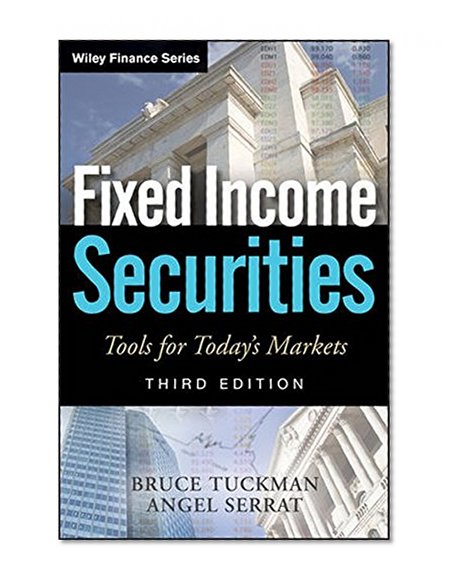Fixed Income Securities: Tools for Today's Markets / Bruce Tuckman, Angel Serrat
| List Price: | |
Our Price: $49.93 | |
|
For Bulk orders
| |
|
Used Book Price: $42.32 | |
| Fixed Income Securities: Tools for Today's Markets / Bruce Tuckman, Angel Serrat | |
| Publisher: Wiley | |
| Availability:Usually ships in 24 hours | |
| Sales Rank: 41682 | |
|
From the Authors: Five Ways to Deepen Your Knowledge of Fixed Income Markets in the Wake of the Financial Crisis
By Bruce Tuckman and Angel Serrat
1. Get to know the 'big picture' of markets and institutions. When markets are calm, you can get away with focusing on your products, your markets, and your customers or trading partners. During a crisis, however, everyone and everything reacts to the same macro forces. To take one example from the '07-'09 crisis, the deterioration of the housing market put stress on structured mortgage products and on the balance sheets of financial institutions, which, in turn, led to the collapse of a seemingly unrelated market, namely that for municipal auction rate securities. Weakened financial institutions were not in a position to support the auctions, which were failing as investors abandoned nearly all short-term investments in structured products.
2. Understand financing. Financial businesses lose money by bets on some market going bad, but they most often fail because they lose their financing. For example, at the start of the financial crisis, many hedge funds that invested exclusively in mortgage-backed securities on a levered basis were forced to unwind and cease operations. This was in part due to portfolio losses, but mostly due to depletion of capital from having to post more and more collateral in support of their borrowing. An even more important example, of course, was the threat to broker-dealers during the crisis, whose repo and commercial paper funding evaporated.
3. Be aware of money market spreads, basis swaps, and credit risk. Perhaps the single most telling icon of the financial crisis is the graph of the three-month LIBOR-OIS spread. This spread, which can be thought of as the cost of locking up funds for three months relative to borrowing at the overnight fed funds rate, became a key metric of financial stress during the crisis. From 2005 to 2007, the average of the USD and EUR LIBOR-OIS spreads were about eight and six basis points, respectively; at the height of the crisis, these spreads peaked at about 365 and 200 basis points, respectively. Of course, locking in the fed funds rate plus the LIBOR-OIS spread is achieved by borrowing at LIBOR and paying LIBOR vs. OIS in a basis swap. More broadly speaking, this all means that credit risk, even at short maturities and even for historically solid counterparties, can no longer be assumed away.
4. Learn how the practice of discounting has changed. Until relatively recently, the cash flows of swaps were discounted at rates derived from par swap rates. This was never a perfectly sound methodology in theory, but so long as LIBOR was not too different from the cost of funding, the methodology was good enough. During the crisis, however, when LIBOR rose way above the cost of funding, discounting at par swap rates gave significantly misleading results. As a result, the most sophisticated practitioners completed their conversion to a two-curve pricing methodology, and, in June 2010, LCH Clearnet converted to OIS discounting.
5. Follow regulatory changes to derivatives markets. The Dodd-Frank law and other regulatory initiatives set out to require that certain swaps be cleared and that others be subject to new rules and capital requirements. Despite the significant passage of time, however, many of the details of the new regulatory regime, including the criteria for mandated clearing and the extent of capital requirements for non-cleared swaps, remain in flux. As a result, significant uncertainties exist with respect to the costs of using and of making markets in swaps.
Fixed Income Securities: Tools for Today's Markets, Third Edition, was revised, among other reasons, to discuss these and other issues that have assumed greater importance as a result of the financial crisis.
Now you can buy Books online in USA,UK, India and more than 100 countries.
*Terms and Conditions apply
Disclaimer: All product data on this page belongs to
 .
.No guarantees are made as to accuracy of prices and information.










